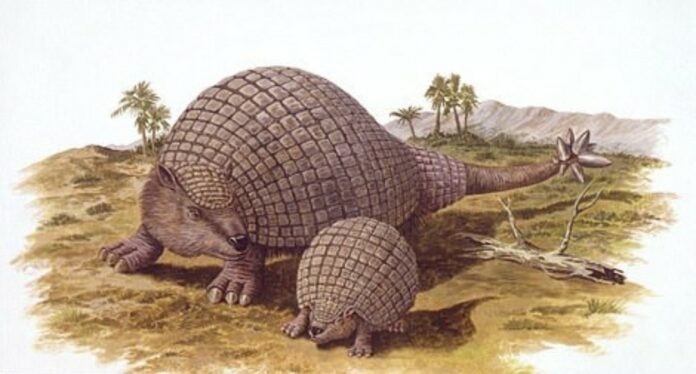Ancient Glyptodonts Discovered in Dried Riverbed
In a stunning paleontological discovery, an Argentinian farmer has uncovered the fossilized shells of four giant prehistoric armadillos, known as Glyptodonts, that roamed South America around 20,000 years ago. The largest of these armored creatures measured nearly the size of a Volkswagen Beetle, offering an extraordinary glimpse into the continent’s Ice Age ecosystem.
A Chance Discovery Near Buenos Aires
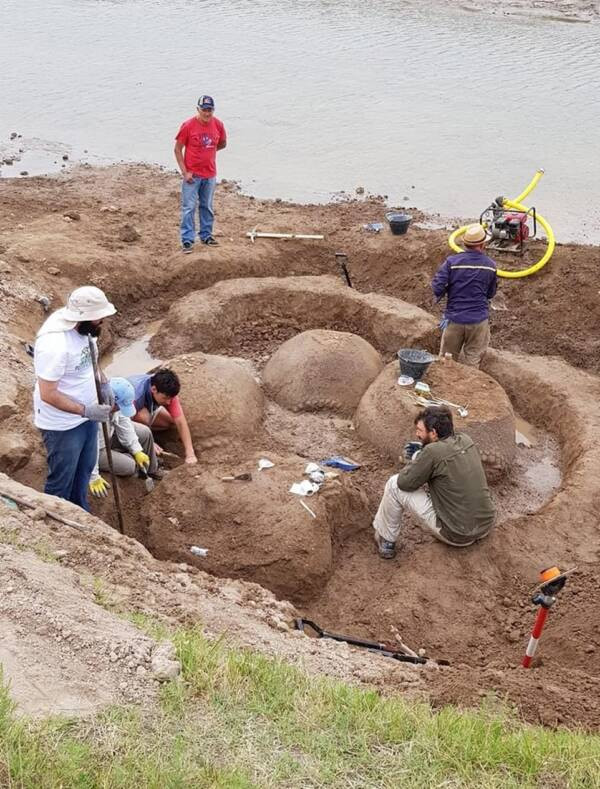
The find was made by Juan de Dios Sota, a farmer from Carlos Spegazzini, while he was herding his cattle near a dried-out riverbed close to Buenos Aires. What at first appeared to be two odd, rounded rock formations soon revealed something extraordinary — the massive, domed shells of long-extinct creatures.
“I thought they were just stones,” Sota told local media, “but when I looked closer, I realized they had a strange texture — like scales.”
Paleontologists quickly arrived at the site and confirmed the discovery: not two, but four remarkably preserved Glyptodont fossils embedded in the riverbed sediment.
Four Fossils, One Ancient Scene
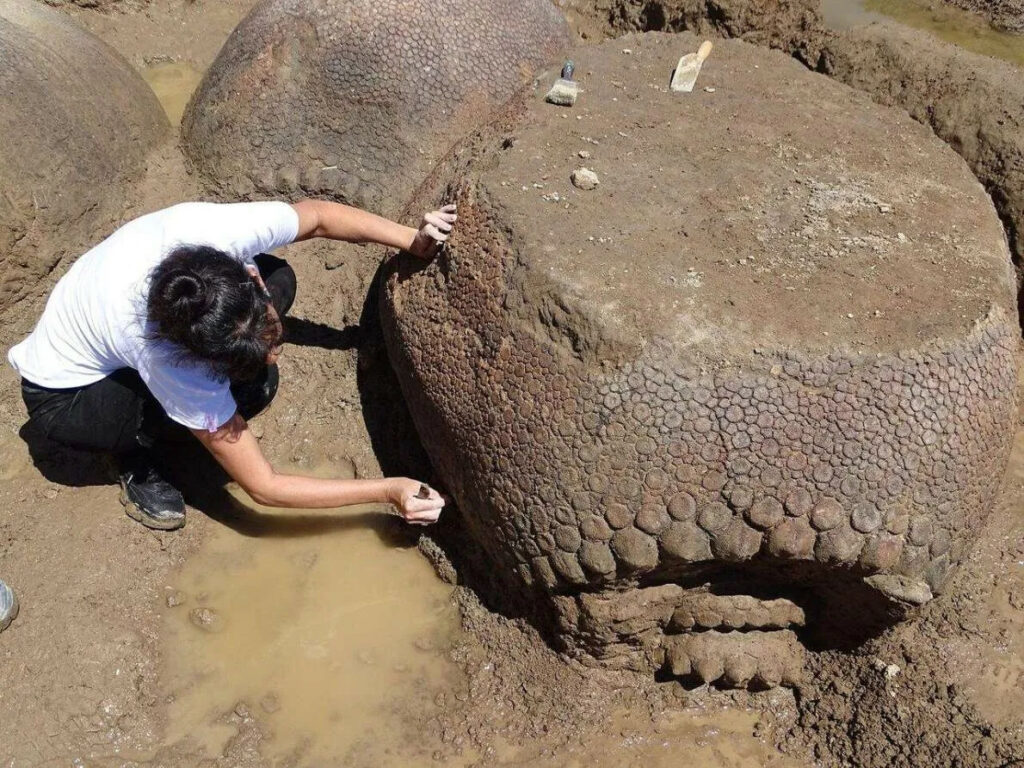
Researchers believe the fossils represent two adult Glyptodonts and two younger ones, possibly a family group that perished together. Their aligned positions suggest they were traveling in the same direction when they died, perhaps trapped by a sudden environmental event such as flooding or rapid climate change.
Archaeologist Pablo Messineo, part of the team studying the site, described the discovery as “exceptionally rare,” noting that finding multiple Glyptodonts in one place offers a rare snapshot of prehistoric herd behavior.
Giants of the Pleistocene

Glyptodonts were massive relatives of modern armadillos, belonging to the same family of armored mammals. They thrived across the Americas during the Pleistocene epoch, sharing the landscape with saber-toothed cats, giant ground sloths, and early humans.
Covered in a tough, bony shell up to five feet long and several inches thick, these herbivores were natural fortresses on legs. Some species weighed over a ton and used their clubbed tails — often tipped with bone spikes — as defensive weapons against predators.
A Window Into Prehistoric Life
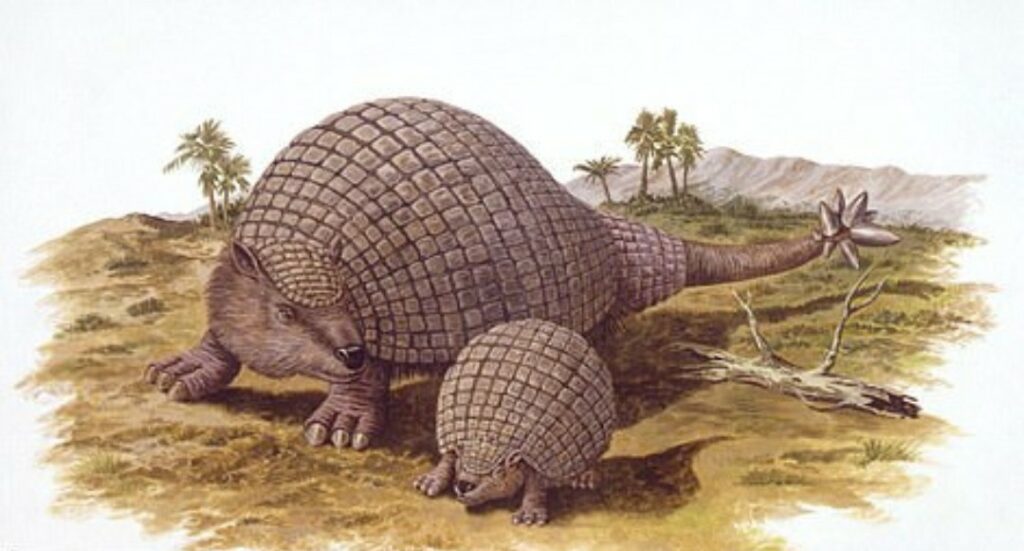
Argentina has long been a hotspot for Glyptodont discoveries. In 2015, another farmer, Jose Antonio Nievas, unearthed a fossilized shell roughly three feet long near Buenos Aires province. That earlier discovery, verified by experts at Argentina’s National Institute of Anthropology, drew international attention and confirmed the region’s rich paleontological potential.
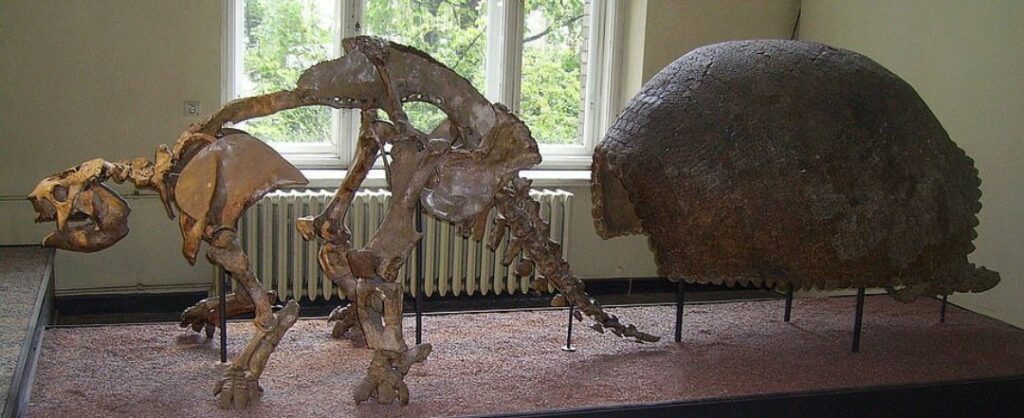
Dr. Adrian Lister of London’s Natural History Museum has praised the latest find, explaining that “the erosion of riverbanks during dry seasons often exposes fossils that have lain hidden for thousands of years.”
The Research Ahead

Scientists are now conducting detailed analyses of the fossils, including radiocarbon dating and isotopic testing, to determine their precise age, diet, and environmental conditions at the time of death. Further excavation and preservation efforts will ensure the specimens remain intact for future study.
The discovery not only adds to Argentina’s already rich record of Ice Age megafauna but also deepens scientific understanding of Glyptodont social behavior and extinction patterns as climates shifted at the end of the last Ice Age.
“This is more than just a fossil find,” Messineo said. “It’s a story frozen in time — one that connects the lives of ancient creatures with the landscape we still live on today.”
Sources:
- BBC News – Farmer Discovers Fossilized Giant Armadillos in Argentina
- Reuters – Four Glyptodont Fossils Unearthed Near Buenos Aires
- National Geographic – Ice Age Giants of South America
- The Guardian – Giant Armadillo Fossils Found in Argentina
